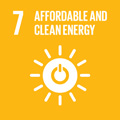- Docente: Giovanni Semprini
- Credits: 4
- SSD: ING-IND/11
- Language: English
- Teaching Mode: Traditional lectures
- Campus: Bologna
- Corso: Second cycle degree programme (LM) in Building Engineering -Architecture (cod. 5697)
-
from Sep 17, 2024 to Dec 17, 2024
Learning outcomes
At the end of the course the student will have acquired an in-depth knowledge on the thermal behavior of the building system and has acquired the design skills for different types of technological envelopes and HVAC plants for closed spaces.
Course contents
The course program include following lectures
- Heat transfer in building structures. Stationary behaviour: thermal resistance and transmittance. Dynamic behaviour: thermal capacity. Convenction and radiation on building surfaces. Heat transfer in cavities. thermal bridges
- Numerical example on thermal performances of traditional and advanced materials and envelope systems: massive and light structures, insulating materials, PCM green wall/roof.
- Vapour diffusion in structures and condensation risk: Glaser Diagram. Examples
- Solar Radiation and performances of transparent systems. Advanced windows systems: low emission glasses,solar control gl., electrocromic gl. Solar Greenhouse.
- Indoor Air Quality, Ventilation and infiltration: modelling of air flows. Natural ventilation examples.
- General overview on heating and cooling plants: Typologies and choice criteria. Introduction on Renewable energy sources: Typologies choice criteria
- Introduction to calculation of Energy needs for heating and cooling of buildings
Readings/Bibliography
Course slides
H. Hens, "Building physics : heat, air and moister : fundamentals and engineering methods with examples and exercises"; Wilhelm Ernst & Sohn
J. Clarke: "Energy simulation in building design", Butterworth Heinemann,
Energy Plus Engineering Reference
Teaching methods
Lectures on course content
Examples of thermal performances of building components and systems and evaluation of energy needs for heating and cooling
question and answers
periodic assessment of student learning (
Assessment methods
the assessment involves 2 steps
1) Writing test with exercises on course topics
2) Short report (and oral presentation) describing the thermal performance of a new building technology (free student's choice)
The final score is a mean value between test and oral presentation of report
Teaching tools
free tools for calculations of thermal performances of building systems and for calculation of heating and cooling energy needs
Office hours
See the website of Giovanni Semprini
SDGs


This teaching activity contributes to the achievement of the Sustainable Development Goals of the UN 2030 Agenda.
